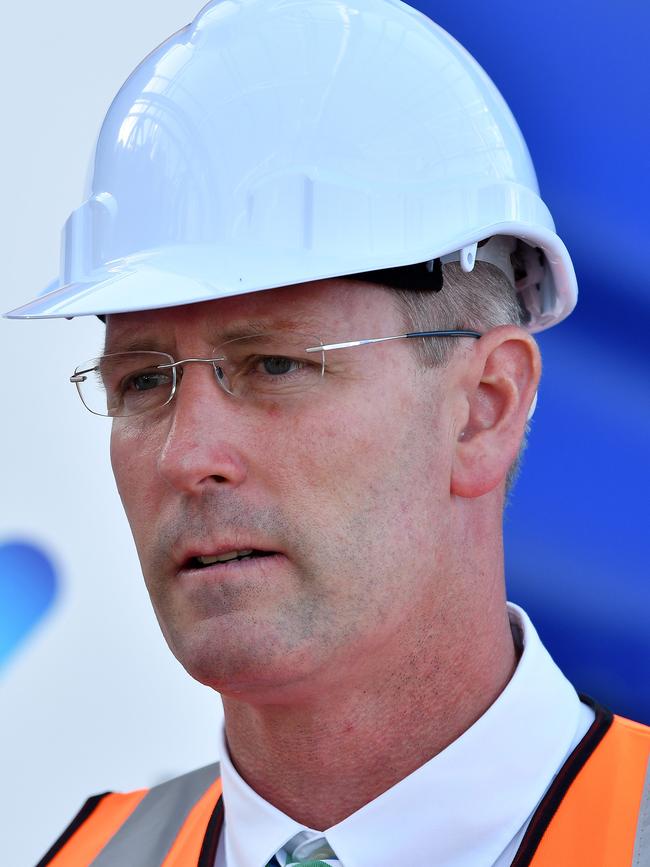SA Power Networks needs to cut spending to deliver bigger savings for consumers, says Minister
Consumers should get a bigger cut to their electricity bills than the $40 proposed by SA Power Networks, the State Government says. But the cheap “solar sponge” tariff is a good idea, it says.
SA News
Don't miss out on the headlines from SA News. Followed categories will be added to My News.
Projected savings of $40 a year on distributing electricity are not good enough, the State Government says.
The distributor, SA Power Networks, should lift productivity and be more prudent in spending to deliver bigger savings, it says.
Nonetheless, the Government strongly supports SA Power Network’s strategy to facilitate greater use of renewables, including a new cheap daytime tariff to soak up electricity generated by rooftop solar panels.
Energy and Mining Minister Dan van Holst Pellekaan has written to the Australian Energy Regulator which is in the process of deciding how much revenue SA Power Networks can make over five years starting July 2020.
SA Power Networks wants to charge consumers $3.9 billion under a proposal which would cut average residential bills by $40 a year and small business bills by $111. SAPN’s charges make up about a third of electricity bills.
Mr van Holst Pellekaan says the proposal “has failed to deliver greater price reductions probably expected” from consultation.

“Unfortunately, SAPN’s regulatory proposal does not adequately address many of the elements requested by the Government and other stakeholders during the consultation process,” he says.
The regulator sets SAPN finances in five-year blocks.
SAPN wants to spend $1.7 billion on capital investment and $1.5 billion on operations.
Capital expenditure would be level with the five years ending June 2020, but operational expenses $206 million up because of higher wages, more customers and some accounting changes.
Challenging the spending program, the government questions:
ASSET replacement — because SAPN underspent in the previous period and may have more pressing investment priorities because of the transition to renewables.
UPGRADES to information technology, depots and vehicle fleets.
CORPORATE costs.
SA Power Networks acknowledged price concerns but stood by its plan.
“Now is not the time to cut our investment in the state’s electricity network,” corporate affairs manager Paul Roberts said.
“Not only is it the oldest in Australia but we are at the forefront of the transition to a renewable energy system and this requires a robust electricity network as it will be the platform for residential and business customers to share the energy they generate.”
SAPN’s proposal includes phasing in a “solar sponge” tariff from 10am to 3pm — charged at a quarter of the standard rate. It would be book ended by peak tariffs at 125 per cent of standard rates.
On productivity, Mr Roberts said SAPN had consistently been the best performer in the National Electricity Market, reining in costs but also reducing scope for further improvements.
Last month, the regulator approved a $46 price rise for 2019-20, the final year of its previous five-year determination. The rise followed a $135 cut in the first year and then three increases totalling $75.
Mr van Holst Pellekaan said the Government will increase the licence fee it charges SAPN by $677,000 — or 3 per cent — to $2,935,000 a year.
His letter to the Australian Energy Regulator is among several submissions on SAPN’s 2020-25 proposal.
Business SA urged price restraint, disputed expected wage rises but welcomed improved reliability.
Tesla executive Mark Twidell said “SAPN is leading the way when it comes to exploring innovative approaches” and “promotes lowest-cost outcomes”.
Energy and Water Ombudsman Sandy Carnale said there had been an increasing volume of complaints from consumers with solar power who were unable to export into the grid because of congestion.
Energy Consumers Australia says SAPN is “leading the industry on tackling challenges and opportunities from integrating solar, batteries and electric vehicles into the grid” but the regulator needs a sharp focus on the proposed expenditure.
The regulator is scheduled to make a draft decision on the SAPN proposal by September this year, followed by a further round of consultation leading to a final decision in April next year.


